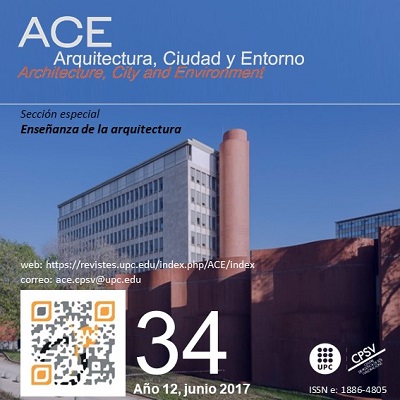Body, space and architectural drawing
DOI:
https://doi.org/10.5821/ace.12.34.5289Keywords:
Creativity, haptic perception, architectural design, teachingAbstract
The aim of this article tackles the two main aspects developed within the subject of drawing in teaching architecture: the action and the document produced. In the first instance, the relation between body and architectural drawing infers in the mechanism of spatial production and spatial ideation, considering the corporeality, the haptic perception and the inseparable relation of humans and space. Our main objective is to hold the action of drawing as an essential tool in spatial analysis, both for its representation and for creating new architectural spaces. Hence, our experience expects to emphasize the importance of creativity in the architectural profession, as well as to enhance professionals’ imagination and the role of drawing in this context. For this purpose, the present article incorporates the theoretical critique of two practical exercises carried out in the School of Architecture of Barcelona, one in the subject of Architectural Representation (second year) and another in Barcelona I: Walking Barcelona (fourth year). These exercises are presented as an opportunity for students to develop the relation between body and space through drawing.
Downloads
Published
Issue
Section
License
| INTELECTUAL PROTECTION CRITERIA |
At this moment, it is count with the "Oficina Española de Patentes y Marcas", while global protection it is being processed by the World Intelectual Property Organization (OMPI/WIPO). Nevertheless the International Standard Serial Number Office (ISSN) has given the following numbers ISSN: 1886-4805 (electronic version) and 1887-7052 (paper version). All articles will be peer reviewed, using double blind reviewing. |
| COPYRIGHT |
The article contents and their comments are authors exclusive liability, and do not reflect necessarily the journal editor commitee's opinion. All ACE published works are subject to the following licence CC BY-NC-ND 3.0 ES http://creativecommons.org/licenses/by-nc-nd/3.0/es/ It implies that authors do not hold nor retain the copyright without restrictions but only those included in the licence. |


































